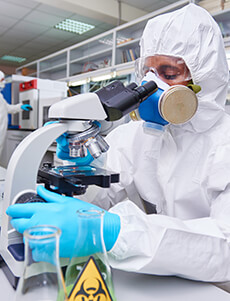2 Essential Tools for Establishing New Facilities
03
February,
2023
2 MINUTE READ

Hospitals on the East and West Coasts are overwhelmed with COVID-19 patients, so the Navy is sending in a pair of hospital ships loaded with more than 1,000 staff and supplies to help provide trauma care. In Salem, Oregon, a small National Guard troop is setting up a nursing station at the state fairgrounds, and equipping it to handle care for more than 250 people to alleviate local hospitals. In situations like these, the correct materials, tools, and resources are key for safety and efficiency.
Thorough Planning
Whether a new facility will be temporary or permanent, it's important to think about how work will be done there, and plan for efficient and effective work during the setup process. That's where 5S comes in.
"The application of Lean manufacturing principles and 5S has transformed the process of facility maintenance and project management," wrote Capt. Adam E. Stickley in North Carolina regarding an Army case study on a 5S project. "The process has saved the Army money, labor, and resources."
The 5S program is a great lean foundation to Sort, Set in Order, Shine, Standardize, and Sustain ? with a bonus of Safety. What's great about starting 5S in a new facility is that it's easier to set up. The benefits that come with it have a ripple effect on overall workplace and business efficiency. With some practical tools along with intuitive thinking and good habits, 5S can be sustained for optimal efficiency. Here are 2 essential tools to use when establishing new facilities using 5S:
 Build a "Living" 5S Map: Start by creating a basic map to organize where equipment and other items should be, and to keep track of inventory. As the facility is set up, refer to the map - but don't let it be a "dead" document. Instead, constantly update it, to reflect the solutions that are needed for the problems that come up. Then, use the map as a reference to keep workflow running smoothly, and continue to change the map whenever necessary. Keep up on 5S by revisiting other plans and checklists, staying on top of maintenance, and looking for ways to improve.
Build a "Living" 5S Map: Start by creating a basic map to organize where equipment and other items should be, and to keep track of inventory. As the facility is set up, refer to the map - but don't let it be a "dead" document. Instead, constantly update it, to reflect the solutions that are needed for the problems that come up. Then, use the map as a reference to keep workflow running smoothly, and continue to change the map whenever necessary. Keep up on 5S by revisiting other plans and checklists, staying on top of maintenance, and looking for ways to improve.- Visual Communication: Signs, labels, and floor marking reinforce 5S and should be part of checklists. They ensure proper information is available to those working in the environment, emergency services, and guests. Color code and mark working and walking areas and equipment boundaries. Use labels for intricate inventory data, chemical labeling, barcodes, and more. Create larger messages for safety notice information, danger notifications, and strategical wayfinding to direct people throughout the building.
Continuous Improvement
5S is not a cleaning exercise. It actively solves problems and can even be used to prevent them when workplaces establish its strategies early on and commit to following through. Encourage employees to embrace 5S as part of work culture. Use 5S education and training materials to stay up to date with best practices, and to promote continuous improvement.
Need a comprehensive 5S packet for all staff to review? Duralabel' free 5S System: Best Practice Guide provides in-depth information to help make the 5S journey successful. Download a copy!ggg
RELATED RESOURCES

Training, Communication Essential for Forklift Safety
Communication and training on a routine basis are important in maintaining forklift safety, operating a ...
Read
Safety, Efficiency Essential in Modern HVAC
The heating, ventilation, air conditioning, and refrigeration industry is heating up as demand grows, new ...
Read
130 Years Strong, E.M. Duggan Thrives on Safety
E.M. Duggan is a fifth-generation, family owned mechanical contracting business in Massachusetts. For 130 ...
Read.png)


